
Complimentary Copy Courtesy of the Daily star SPRING 2023 The Art & Science of Cultivating in Cherry VAlley Lilacs Area Garden Centers Gear Up for Spring A WorldW.I.D.E. Family Festival Cookin’ with Collins: Leek & Kale Galette
4 Area Garden Centers Gear Up for Spring
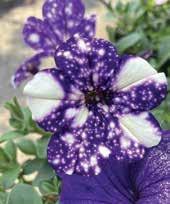

8 12
The Beekman Boys: Making a Big Impact in a Small Town
The Art & Science of Cultivating Lilacs in Cherry Valley

A Hardy Harvest: Hartwick Woman Highlights Native Plants

A WorldW.I.D.E. Family Festival
COLUMNS
Cookin’ with Collins: Leek & Kale Galette

Self-Care Corner with Chelsea: Spring!
The Walls Talk: Sidney Neighborhood Was Once a Hotspot
The Catskill Geologists: Pratt Rock
2 | UPSTATE LIFE MAGAZINE | SPRING 2023 SPRING 2023 | VOLUME 17 | ISSUE 2
Contents
26 16 24 28 20 16 23 4 12 20
Just before writing this, I saw my first robin.
Our winter was surprisingly mild, but then what should’ve been a promising pre-spring felt like Mother Nature making up for lost time, dumping last-minute feet of snow on us. The cupholder of my toddler’s stroller still has the crushed blue remnants of robin’s eggs found last spring, and I have been waiting (impatiently) to take walks again, to feel, again, a sense of discovery and renewal. So, that first sighting felt buoying, and after that one, I saw hundreds, as if they all arrived at once, on cue.
I hadn’t realized that, in some parts of the country, the American Robin stays put. Or, at least, travels far less than its migratory counterparts in the Northeast. The robin’s return is not, then, for some, such a harbinger of spring. But, in upstate New York and as Kenn Kaufman, a bird expert and writer with Audubon Magazine put it in a March 2022 article describing his Ohio backyard, their return “feels like a joyful awakening, a rebirth.”
He writes: “After an absence of three months or more, suddenly the robins are back, bold in their colors, bold in their actions and impossible to miss. Flocks are passing through town on their way farther north, and we see them on open lawns after every rain, running and pausing, running again, seeking worms. Local males are starting to stake out territories, staging battles at the boundaries, with chases and strident cries. Soon, they’ll be singing every morning, with that rich, full-throated caroling, the sound of spring sunrise across much of North America.”
This edition is full of sun-drenched, spring-y photos, eats and happenings. I hope it finds you, too, “back” after a winter away, moving boldly in your colors and actions and impossible to miss as you root into the season.

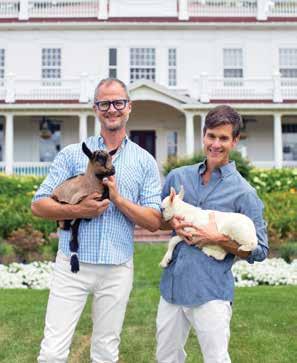
SPRING 2023 | UPSTATE LIFE MAGAZINE | 3 eDitor’s
On the cover Upstate Life Magazine, Winner, New York State Associated Press Association First-Place Award for Specialty Publications, is published by: The Daily Star, 102 Chestnut St., Oneonta, NY 13820 © 2023 - All rights reserved. Publisher and General Manager Valerie
Editor Allison Collins
Tracy
Interested in advertising in Upstate Life Magazine? Call toll-free, 1-800-721-1000, ext. 235 CONTRIBUTED
Corner
Secor
Graphic Designer
Bender
Beekman
We invite you to email your comments to: upstatelifeeditor@thedailystar.com
Co-founders of
1802 Josh Kilmer-Purcell, left, and Dr. Brent Ridge stand in front of Beekman Mansion with baby goats.
Garden Centers Gear Up for Spring



 BY LEIGH INFIELD
BY LEIGH INFIELD
Ah, spring! We long for it all winter. Soon, the earth will be bursting with new life and color, and though vestiges of winter may linger, the promise of sun-filled days warms the soul. It’s the perfect time to start planning for the new growing season.


A visit to local garden centers is where plans turn into action. Many are family-run, and you’ll get the kind of friendly, personal service that leads to a beautiful garden.
steve’s Greenhouse, hamden
“After the freezing, gray winter months, we need bursts of new greenery and bright colors to perk up our surroundings,” Steven and Nelly Xydous, owners of Steve’s Greenhouse in Hamden, said. The Xydouses, who came out of retirement to start their greenhouse business two years ago, offer colorful flowers and vegetable and houseplants, along with succulents and hanging baskets in six greenhouses.
“When you think of spring, you think of tulips and daffodils,” Nelly, who spent 35 years in her own floral business before the coupled moved to Hamden from Brooklyn, said. “However, these lovely flowers must be planted in the fall. If you missed the boat, there are still plenty of beautiful blooms to fill your garden, window boxes and planters. Favorites such as colorful zinnias, petunias, pansies and marigolds can be planted once we’ve seen the last frost.”

Nelly said she loves taking customers on tours of the greenhouses, particularly in the early spring, when temperatures outdoors are still chilly. In the greenhouse, it is roughly 80 degrees.
“When you want Florida weather, come visit us,” she said. That temperature, Nelly noted, is perfect for young plants still growing in early spring – many of which will fill their 800 overhead hangers. The couple also offer hard-to-find collectible plants, such as banana, dolphin and delicate necklace plants, named for the way in which the plant drapes as it grows. They also carry unusual succulents, including the zebra cactus, named for its white stripes. Interested in growing your own fruit? Steve’s Greenhouse has young and fully grown apple, plum, pear and apricot trees available.
Area
top right: Plants are potted and ready at Steve’s Greenhouse in Hamden. above: Nelly Xydous works in the Hamden greenhouses she co-owns with husband, Steve. | LEIGH INfIELD
4 | UPSTATE LIFE MAGAZINE | SPRING 2023
“There is such joy in watching these grow, thrive and bear fruit,” Nelly said. One important tip: “Fruit trees sleep in winter. Do water them when you first plant them. The trees hold their water inside, so frequent watering isn’t necessary.” This season, Steve’s Greenhouse will also have Norwegian spruce trees.
The Xydouses advise consumers to ask whether the plants they are buying need plenty of sun or shade, require lots of water or, like succulents, need less. With fathers in the agriculture business, Nelly and Steve have gardening in their blood. “We love to grow,” Nelly said.
Steve’s Greenhouse, 37784 state Route 10, Hamden, is open from 9 a.m. to 5 p.m., daily. Call 607-746-6006 or follow them on Facebook.
Gretna Gardens, otego
The sign along state Highway 7 in Otego is up and reads, “We’re so excited, we wet our plants.” Gretna Gardens is ready and open for business. The popular spot for all things green and beautiful opened in 2013, when Richard Hewlett sold his family’s dairy farm and went into the gardening business. Named for the road where he grew up in Pleasant Valley, Gretna Gardens remains a family affair.
“Sisters and husbands help out and pitch in when needed during the busy season,” Carrie DeJoy, who has stepped in to her father’s shoes to manage the center’s 15 greenhouses, said. “We always had gardens as farmers. It’s become a passion.”
Gretna offers more than 600 varieties of beautiful perennials and shrubs. This season, they are getting in more fruit trees and houseplants, along with new varieties of flowers, light cucumbers and pumpkins started from seeds.

“We maintain a wish list,” DeJoy said. “When a customer asks whether we have a particular flower or shrub, we jot it down if we don’t have it. We then order it and, if it isn’t available that season, we make sure it is in stock the following year.”
Gretna starts vegetables from seed inside, ensuring the plants will be ready for customers who anticipate early planting. DeJoy noted that the Old Farmers’ Almanac suggests waiting until after the full moon in June to put in vining vegetables, such as squash. But early spring, she said, is the perfect time to ready the soil. “Till it up real good,” she said, laughing. “Put some elbow grease into it.”
Gretna Gardens is also known for its “giveaways.” Hanging baskets have proven to be popular, and Gretna will be repeating this giveaway each day of Mother’s Day Weekend. Look for future updates on the nursery Facebook page and in-store.
Gretna Gardens is at 2664 state Highway 7, Otego. Call 607-267 1707 for more information, or find “Gretna Gardens” on Facebook. The nursery is open from 9 a.m. to 6 p.m., Monday through Saturday, and 9 to 5, Sunday.
new asbury Gardens, oneonta
Brian Fawcett, owner of New Asbury Gardens, is celebrating his 43rd year in the gardening business.

Fawcett said he’s always liked working outdoors.
“My dad was an Oneonta policeman (and) we had a family of nine, and therefore maintained a big garden,” he said. “As a kid, I helped out in the garden. I’ve always wanted to have the kind of garden center where people could enjoy walking around and feel comfortable just being outdoors on a beautiful sunny day.”
Fawcett realized his dream 37 years ago, opening his garden center on River Street, Oneonta. As a tribute to his father, he included Asbury in the business name, as it was his father’s middle name. “When we first opened there were no garden centers in Oneonta,” he said. “I felt it was time to fill that void.”
April marks the center’s official opening, though preparations for the spring/summer season begin in March. New Asbury Gardens has a large inventory of nearly 5,000 perennials and shrubs. Customers will also find exotic varieties, such as euphorbias, selenium and Fawcett’s personal favorite, the castor bean, a hearty annual with large leaves that can grow to 10 feet tall.
Vegetables and herbs are started from a combination of seed and plant. Pansies, violets and snapdragons are flowers that Fawcett said growers can plant after the last frost.

“In our area, one has to be careful not to plant too early, as we can have a frost as late as early May,” he said. “It’s always wise to keep something handy to cover your plants if a frost warning is issued.”
According to Fawcett, vegetable gardens rebounded during and since the COVID-19 pandemic, when many families grew their own to cut down on grocery store visits.
above: The Gretna Garden family stands in one of their 15 greenhouses. Back row, from left: DeJoy’s elder son, Richard Hewlett, husband, Bumper DeJoy and uncle, Pete Ottzen; middle row: Scarlett Newman, Carrie DeJoy and her dafter, Richard Hewlett; front: DeJoy’s young son, Sam DeJoy. Below, from left: Vibrant orange zinnias grow at Gretna Gardens in Otego. Petunias are a spring favorite at Gretna Gardens.| CONTRIBUTED
“You don’t have to have a large in-ground garden,” he said. “Raised planters and containers can give you all the vegetables you need.” Starting a tray or two of heartier herbs indoors, such as chives, parsley and sage, he noted, is a wonderful idea. “It’s fun watching them grow from seed, and planting them outdoors in the garden when the weather is warm.”
Home gardens can be prepped in early spring, Fawcett said.

“It’s a good time to pull out remnants of the old garden, such as old garden plants, as they can harbor diseases and bug eggs,” he said, noting that hardier vegetables such as spinach, peas, kale, cabbage, broccoli, cauliflower, Brussels sprouts, beets and some lettuces can be planted in April, weather permitting. Plants needing warmer weather, such as tomatoes, peppers, squash, cucumbers and more delicate lettuces, can get planted in the second week of May.
New Asbury Gardens also carries fruit trees, a line of shade-tolerant plants, hanging plants and items for a water garden, including lilies, rushes and even fish.
New Asbury Gardens, 248 River St., Oneonta, is open from 9 a.m. to 6 p.m., Monday through Saturday, and 10 to 4, Sunday, during the season. For more information, call 607-432-8703.

annutto’s farm stand
Annutto’s, in its 39th year, operates five greenhouses and its popular farm stand, featuring fresh produce, homemade baked goods and gourmet products. Annutto’s draws not only faithful local customers, but out-of-towners, too. Customers count on Annutto’s to find what they need to replenish or start a garden and enjoy shopping the store.
Annutto’s offers annuals and perennials, along with fruit trees, berry bushes, dormant trees, climbing potato vines and more. They start planting from seed, cuttings and plugs in mid-March. Customers will find favorites such as pansies, Johnny jump-ups, violets, petunias, New Guinea impatiens and marigolds when the greenhouses open to the public in spring.
“We look for something new each season, whether it’s for our farm stand or the garden center,” Debbie Annutto, who owns and manages the business with input from her recently retired father, Tony, said. “This year, we will be trying out a new basil plant that doesn’t go to seed as fast as other varieties. It does well in containers and can be started indoors.”
As a girl, Annutto helped her father in their Herkimer store. When they moved the business to Oneonta in 1984, she partnered with her father to expand the business, adding products and services such as the deli and bakery.
Annutto suggests starting with plants that can tolerate a fickle late frost. These include peas, hardier lettuces, broccoli, Brussels sprouts, cabbage and spinach. Tomato plants also grow early in their greenhouses. “In April, we will have six packs available,” she said. “By May, the plants may be six feet tall.”
Annutto’s also carries apple, peach, cherry and pear trees. Annutto said the earlier growers put in fruit trees, the better, as the ground is nice and moist. Her two best gardening tips: Make sure that you have good soil. If you plant in poor soil, you will get poorer results; that goes for containers and the garden, as well. And use the best fertilizer, either organic or a good synthetic brand.
Have questions? The Annuttos and their team of 12 are happy to give gardening advice.
Annutto’s is at 5396 state Route 7, Oneonta. Call 607-432-7905 for more information, visit annuttos.com and follow them on Facebook. Hours: 9 a.m. to 6 p.m., Monday through Sunday.
two more:
Check out the father-and-son, family-run Sweet Meadows Country Store & Garden Center in Davenport. Sweet Meadows carries annuals and perennials, fruits, vegetables and herb plants, trees, shrubs and houseplants. Shop the store for home decor, pet and other products. Also visit Sweet Meadows online for such specialties as home beer-brewing and wine-making kits. Sweet Meadows, 1826 state Highway 23, Davenport, is open 9 a.m. to 5 p.m., Monday through Saturday. Call 607-278-4005 of visit sweetmeadowsgarden.com
Go to the source. Mount Vision Garden Center, 125 county Highway 46, Mount Vision, has 28 greenhouses and brings in hundreds of thousands of plants – annuals, perennials, vegetables – each season. They often supply plugs for other regional garden centers and maintain a farm stand. The center is open from 8 a.m. to 7 p.m., daily. For more information, call 607-432-1260.
Happy gardening! +
6 | UPSTATE LIFE MAGAZINE | SPRING 2023
you Don’t have to have a larGe in-GrounD GarDen. raiseD planters anD Containers Can Give you all the veGetaBles you neeD.”
above: Blooms abound in an Annutto’s greenhouse last year. Below: Houseplants are pictured in one of the Annutto’s greenhouses during the 2022 season. | CONTRIBUTED




www.epic-landscapes.com 607-547-5800 Landscape Design •I nstallation 3D Modeling &V ideo Wa lkthroughs Maintenance•L aw nCar e Fer tilization &Pest Management Sno wRem ov al Sno
THE BEEKMAN BOYS:
Making a
Big Impact in a Small Town
BY MONICA CALZOLARI
Beekman 1802 is the largest beauty brand across QVC and the Home Shopping Network (HSN), but it was not always this way.
It began when Dr. Brent Ridge and Josh Kilmer-Purcell fell in love with Sharon Springs during an apple-picking weekend get-a-way in 2006, at which time they learned that the William Beekman Mansion was for sale.
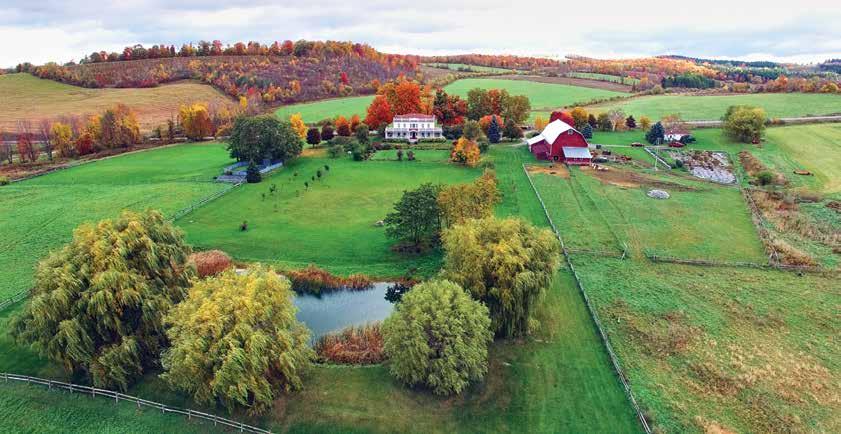
Dr. Ridge is a physician who practiced medicine at Mount Sinai Hospitals, and specialized in aging. He was working as the vice president of Healthy Living for Martha Stewart Omnimedia. He met Josh Kilmer-Purcell, the love of his life, online, in 1999. Kilmer-Purcell is a best-selling author who worked as an art director at advertising agencies in Manhattan and knows a thing or two about how to bring products to market.
They both had good jobs downstate when they bought the Beekman Mansion. When the recession hit in 2008, they lost their jobs and needed a back-up plan.
Got Goats?
A struggling farmer in Sharon Springs, also hard hit by the recession, asked the couple if they could take in his herd of goats so they could graze on the Beekman farm. They said yes. Those goats became the inspiration for their very first product: goat-milk soap.
The couple started experimenting with soap made with all-natural ingredients, sharing samples with family and friends, including
Martha Stewart. They received positive feedback.
Dr. Ridge and Kilmer-Purcell co-founded Beekman 1802 in 2009, naming it after the Beekman Mansion, built in 1802. The couple became known as the Beekman Boys.
Beekman 1802 was far from an overnight success, despite great connections such as Martha Stewart and the couple’s complementary skill sets. As they describe in an October 2022 blog post, “…for the first seven years as we struggled to cover our mortgage, invest in research; and grow our team. We did everything we could to stay afloat … from growing our own food to keeping the temperature in the house at 48 degrees in the winter.”
Recently, the company has invested heavily in clinical research to study the science behind goat milk, the main ingredient for its beauty products since 2009. Thirty million bars of goat-milk soap later, here is what Dr. Ridge learned:
• “Goat milk is a natural remedy for sensitive skin.”
• “60-70% of Americans have sensitive skin.”
• “Goat milk has the same pH as human skin, so it is gentle on the skin and effective.”
• “Goat milk is good for skin issues, like eczema and psoriasis.”
These days, Beekman 1802 is educating its customers, who they call “neighbors,” about healthy skin and the skin microbiome. According to the company website, Beekman 1802 products are “tested and certified safe for the microbiome.”
8 | UPSTATE LIFE MAGAZINE | SPRING 2023
An aerial view of Beekman 1802 farm. Baby goat tours are offered several times a month. See Beekman1802.com for dates and times.
Cultivating Kindness
The co-founders like to say that “Beekman 1802 is a brand with two main ingredients: goat milk and kindness.”
Dr. Ridge was raised by a single mother who worked as a nurse. As a physician, he saw the impact that kindness has on patients and their wellness. According to Dr. Ridge’s research, “Kindness impacts our bodies on a cellular level, and that impact shows up in the health of our bodies, our skin and our minds.”
The founders operate their company with this unique philosophy of kindness, even offering kindness workshops.
“We believe that we’ll never ever go wrong, as long as we treat every single person like they’re our next-door neighbor,” Josh Kilmer-Purcell said.
Living in a rural community, the co-founders have never lost sight of the values that attracted them to the area more than 15 years ago. Since launching, they have been dedicated to supporting local artisans and promoting the ‘buy local’ concept. Beekman 1802 showcases one-of-a-kind, handcrafted items on its website and in the retail store, which the couple renamed “Kindness Shop.”
As the company grew, Ridge and Kilmer-Purcell began sourcing
their goat milk from 25 other privately owned family farms in the United States, in addition to their farm in Sharon Springs. Today, Beekman 1802 employs 250 people in its headquarters in Schenectady and its warehouse in Orlando, Florida.

In 2020, Beekman 1802 partnered with Ulta Beauty to sell its products in 400 retail stores nationwide. Despite enormous success, the co-founders remain focused on their core values.

“We are most proud of building a company that is known for spreading a message of kindness,” Ridge said. “How you treat yourself is important, how you treat others is important, and how you treat the planet is important.”
For more information, visit beekman1802.com.
We Believe that We’ll never ever Go WronG, as lonG as We treat every sinGle person liKe they’re our next-Door neiGhBor.”
left to right: Beekman 1802 Kindness Shop, 187 Main St., Sharon Springs, is open from 10 a.m. to 6 p.m., daily. A historic marker documents the William Beekman Mansion, built in 1802.
PHOTOS CONTRIBUTED
v isiting the farm
Beekman 1802 offers several ways for the community to experience the culture behind their line of Clinically Kind products. To schedule a trip, or find ticketed events, visit beekman1802.com/collections/ticketed-events. upcoming events:

• Baby Goat Tours, offered four times a month at $40, including May 6, 7 and 27
• Awe GOATS ART TOUR at farm, offered once a month at $25, May 20

• Kindness Workshop, offered twice a month at $85
• Lilac Harvest Picnic at Cherry Valley Lilacs, offered once a year in June; date to be announced. +
Inside Beekman 1802’s retail Kindness Shop.
























INSUR ANCE RATES ARE CHANGING! 32 Ben Novellano: Agent/Owner BIERITZ INSURANCE AGENCY 209 Main Street, Cooper st own, NY www.Bier itzInsurance.com Call US to get a quote desig ned for you! 607-547-2951 Protection for ever y aspe ct of your life! Secor Home Inspections & Testing &Testing Thorough & Professional Home Inspections • Interior/Exterior Home Inspection •Well Water Sampling •WDO/Ter mite Inspections •Radon Testing •FHA/VAFoundation Certification •Septic Dye Testing •Mold Assessment www.SecorHomeInspections.com To schedule an inspection, call or visit our website today! NACHI20010920 NYS Mold Assessor License #01668 (607) 286-4061 sybilsyarnshop.com 65 S. Main St. Tuesday- Friday 12pm-6pm Saturday 10am-5pm AWideVarietyofCheese &Cheese Curds Jams,Jellies,Salsa &Hot Sauces Maple Syrup, Honey&PancakeMix Crackers,Homemade Canned &Baked Goods, LocalPotter y, Soaps,Lotions &Jewelr y, Christmas Wreaths &GiftBaskets Delicious Homemade Cheesecakes! 3941 NYSHwy
Milford
Monday-Sunday 10am-6pm
28,
978-257-4635 or 607-222-9875
The Art & Science of Cultivating in Cherry VAlley Lilacs
 BY MONICA CALZOLARI
BY MONICA CALZOLARI
Cherry Valley is home to a large and rare collection of lilacs. Visitors can experience more than 150 varieties of these fragrant flowers at Cherry Valley Lilacs, 54 Lancaster Street, Cherry Valley.
The lilac farm is open to the public from Mother’s Day weekend, May 13 through June 10. Every May, during the third and fourth weeks of the month, the town of Cherry Valley also hosts a Lilac Festival. It occurs over Memorial Day weekend.
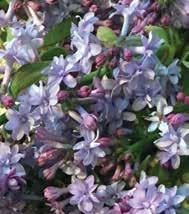

When Charle-Pan Dawson and her husband, Dana, purchased their 6.5-acre farm and the historic Bates Hop House in 2013, they inherited about 100 lilac trees, planted by the Alverson family more than 30 years ago.
The Dawsons became full-time farmers in their retirement. Their two-person, family-owned business is as unique as is Charle-Pan’s name. Named for her father, Charles, and her mother, Pansy, Charle-Pan showed an early love of flowers, the environment and chemistry. All three played a role in creating what she calls a “dream come true.”
The Dawsons created a nursery on the property and have been selling lilac plants for 10 years. They sell to individuals, landscapers and botanical gardens around the country, including the New Jersey Botanical Garden. Lilac trees grow best in cold-weather climates, and Wisconsin, Michigan and Rochester, New York also have lilac festivals.
Dawson is a member of the International Lilac Society. Among her farm’s 150 varieties of lilacs are early bloomers, mid-season bloomers and late bloomers.
PIXABAY.COM 12 | UPSTATE LIFE MAGAZINE | SPRING 2023
The purple variety of lilac is commonly recognized as the most fragrant.
DaWson enCouraGes
visitors to tour her GarDen anD inDulGe in a “total immersive experienCe, CalleD ‘lilaC BathinG.’” she DesCriBes the sCent of her ColleCtion of lilaCs as “intoxiCatinG, sensual anD Deep,” as Well as “therapeutiC.”
essential essence
As the season to enjoy lilacs is short – four to five weeks at most – Dawson was determined to find more ways to share the flowers’ aroma with others through organically grown, hand-made lilac products. In 2013, she began making lilac pomade.
Dawson noted that it took her another four years “to crack the code to make lilac absolute, using an ancient process called enfleurage.” By 2017, she developed a three-step process, one she calls “revolutionary.”
“Perfume,” she noted, “is usually a blend of essential oils and absolutes.”
Today, Cherry Valley Lilacs is “the only lilac perfumery in the world,” according to Dawson.

Dawson said she scoured all the books she could find on extracting the scent of lilac from the trees on her property. She even called the Institute of Perfume in France asking for advice. One famous perfumer advised her more than 10 years ago not to bother with lilac enfleurage, as it is too difficult. She became certified by the International Perfume Foundation.
The movie “The Perfume” is the only photographic evidence she could find explaining the process called enfleurage which dates, she said, to the 1600s.
“I figured out a way to make lilac essential oil, which has never been done before,” Dawson said, noting that she is “the only one in the world who makes the real extraction of lilac on a commercial scale.”
planting it forward
Charle-Pan was born in upstate New York and was 30 years old with three children before enrolling at Chatham University in Pittsburgh to study chemistry formally. She was 35 years old when she graduated.
“I was an environmental activist in my youth, a chef, an environmental chemist and later worked for the state of New York as a project manager in the field of renewable energy, green building and energy conservation,” she said.
Inspired to “revitalize the art of enfleurage” she authored “Charle-Pan’s Little Book of Enfleurage,” under her full name, Charle-Pan Alison Rockwell Dawson. Her goal is to revive the methods of traditional enfleurage that died away when synthetics became popular in the early 1900s. She offers workshops in her studio laboratory, teaching others her methods of extraction.
Cherry Valley Lilacs is a member of the International Lilac Society, headquartered in Canada.

“The International Lilac Society has come to our property many times,” Dawson said. “Our farm is listed in their catalogue. We have a very rare collection of lilacs. There are only one or two copies of some of our lilac varieties in the entire world.”
Dawson credited former property owners the Alversons with “planting it forward, for future generations to enjoy these lilacs for many years to come.”
And the Dawsons are following in the Alversons’ footsteps, planting another 30 to 40 lilac trees on their property over the past 10 years. According to the website, Cherry Valley Lilacs specializes in “rare and hand-propagated classic, heritage and new generation hybrid lilacs.”
Mr. Dawson joked about the roles they play running their labor-intensive business, saying: “I make the essential toil and she makes the essential oil.”
Mrs. Dawson describes her husband’s role as the nurseryman who tends the lilac trees, drives the tractor, cuts the grass and pots all the lilacs sold in their nursery. The couple adheres to strict organic growing, harvesting and processing criteria.
Dawson encourages visitors to tour her garden and indulge in a “total immersive experience, called ‘lilac bathing.’” She describes the scent of her collection of lilacs as “intoxicating, sensual and deep,” as well as “therapeutic.” The Dawsons also have 1,400 peonies trees on their property.
For more information, visit cherryvalleylilacs.com.
i fiGureD out a Way to maKe lilaC essential oil, WhiCh has never Been Done Before.”
The Dawsons adhere to strict organic growing, harvesting and processing criteria as they tend to their 150 varieties of lilacs.
Pictured are vials of Dawson’s lilac enfleurage, produced in Cherry Valley, at what Dawson calls the only lilac perfumery in the world.
top left to right: Dana Dawson and Charle-Pan Dawson started their twoperson, family-owned business in 2013. Pomade is a highly scented moisturizer, or body butter. It is available for sale on the company’s Etsy site. Charle-Pan Dawson set up her extraction laboratory in 2017, and today calls this studio space The Perfumery. This is where she offers workshops, teaching her three-step enfleurage process of extraction. Cherry Valley Lilacs specializes in ‘rare and hand-propagated classic, heritage and new generation hybrid lilacs. Wooden frames are an important part of Dawson’s enfleurage kit.
Ways to experience Cherry valley lilacs:



• Tour the Lilac Exhibit Garden at 1 and 2 p.m., May and June, by reservation


• Tours of The Perfumery are also available by reservation
• A two-hour enfleurage lecture and slide show
• A five-hour workshop in “the art of enfleurage,” that carries continuing education credits for aromatherapists.
• Full-day enfleurage workshop
• Three-day essential oil absolute extraction workshop


• Dawson’s Charle-Pan’s Little Book of Enfleurage
• Enfleurage kits available for sale
• cherryvalleylilacs.com +
PHOTOS CONTRIBUTED


















Windows & Doors Kitchens & Baths We have afull selection of energy efficient windows and doors in stock. Come see our solid wood kitchen cabinets &bathroom vanities MANY ITEMS IN STOCK CUSTOM ORDER TO FIT YOUR NEEDS 4189 STATEHWY.28, MILFORD,NY~607-286-7856 Hours: Tuesday• Friday8:30-5; Saturday8:30-4; Closed Sunday&Monday www.anjwindows.com TopPrice paid for old militar yitems, US or foreign: Ibuy collections. Will come to you. Email: buyoldwarstuff@gmail.com Contact Vincent at 607-287-4022 Buying Old Militar yItemsFrom Vietnam to Ancient Times Guns Uniforms Swords Knives Bayonets Muskets Medals Patches Canteens Medals Boots Coats Tools Letters Binoculars 22 Main St. Cooperstown , NY 13326 (607) 547-9777 www.cooperstownart.com Galler y Shop | Exhibits | Juried Shows 55 Pioneer St. Cooperstown , NY 13326 (607) 547-8671 www.smithyarts.org The Smithy Clay Studio is Open Year Round! Galler y Open: June 6 - September 2 Galler y Hours: Tuesday - Saturday 11am-4pm Galler y Shop Open During Galler y Hours Galler y Hours: Tuesday - Saturday 11am-4pm The Smithy Gallery & Clay Studio The Cooperstown Art Association Galleries S PR AY FOAM *15+ YEARS EXPERIENCE* K ANE D IBENEDET TO D ENVE R,NY FRE E E STIMATES -FULLY INSUR ED WWW.HOMEFOAMIN SULATION.NET HOMEFOAMIN SULATION @ YAHOO.COM Drilling Corp. 264 Co.Hwy.38, Arkville,NY12406 www.titanwelldrillingny.com •Find us on Facebook 1-800-GO-TITAN •1-845-586-4000 Contact us for dependable drilling contractors who ensureyour watersystems areoperating as theyshould SPECIALIZING IN WATER WELL DRILLING Pump Sales &Service, WaterFiltration &Geo Thermal Drilling frombacteria to clay and everything in between We will solve any/all of your water issues Don’t Put Up With Dirty, Smelly water! Diana FriedelrD Psychic-Intuitive Reader, Teacher, Medium an dHealer;Minister, Institute for Spiritual Development •Confidential PsychicReadings607-433-2089 •Intuitive Energy Healings Lookingorgrddance in thesechangindmes? "Very inspiringand healing." "Amazing and right on target Agreat help withguidance" "I was skeptical cominginand once Iwas told things no one else could know ' Ileft with an entire new outlook! Thank you." � � every � 5 :30p _fL. Like us on LJfacebook. ,r.. @TuninglnTuningUp @ISDOneonta more info -www.dianafriedell.com Looking for guidance in these changing times!
A Hardy Harvest: Hartwick Woman Highlights Native Plants
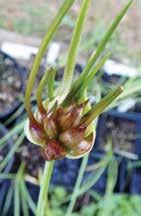



 BY ALLISON COLLINS
BY ALLISON COLLINS
Connie Tedesco’s passion for plants took root early in life, but she said it was “a hobby gone awry” that led to launching The Fernery in 2014.
The 108 Whitehouse Road, Hartwick nursery specializes in native plants, including its titular type, perennials, grasses, sedges, shrubs and trees. Citing grownativemass.org, Tedesco said, a native plant is “one that has evolved over thousands of years in a particular region and was present prior to the introduction of non-native plants from other continents.” According to theferneryatwhitehouse.com, nearly all Fernery plants are native “to the “Leatherstocking region of central New York, which includes the ecozones Northern Allegheny Plateau and the Mohawk Valley section of the Eastern Great Lakes lowlands.”
“My degree was in plant science and my master’s was in biology, but I never really got to use the skills I’d learned in my professional career, so I dabbled,” Tedesco said. “I planted ferns and I bought properties and planted trees, but I didn’t really get to do this as an occupation, so when I retired from my career, I started working for the Otsego Land Trust, then followed that by working for the Mohawk Valley Conservancy and I worked as a botanist for a forest service and did contract work for New York State and a variety of conservation-type (agencies). However, what got me into it the most was, I started a project as part of my master’s thesis called ‘the flora of Otsego County,’ in which I traveled all over the county looking for species
16 | UPSTATE LIFE MAGAZINE | SPRING 2023
Connie Tedesco and Dr. Pete fauth examine seedlings at the Hartwick College greenhouses in March.
left to right: Young maidenhair fern plants grow in the college’s renovated greenhouses. Wild garlic grows at The Fernery in this undated photo. Spring ephemerals sprout and bloom at The Fernery. Virginia bluebells, striped violets and helenium autumnale, or common sneezeweed, grow at The Fernery.
that had been unrecorded … and, because of all that time I spent looking for sedges and grasses and native plants, I became more appreciative of native plants, so that’s how I started getting into it.”
Tedesco, whose thesis work led to her recording “over 1,300 (species) of flora of Otsego County,” said The Fernery also filled a gap.
“When I retired, just 10 years ago, I started The Fernery by putting out just ferns and shade plants, because no one else was doing that and you couldn’t find that,” she said. “Garden centers didn’t have that. I wanted to have an alternative to hosta, and I like ferns; they’re gorgeous. Most native ferns are deer resistant, so (someone) might want just a big fern, or a variety of wood ferns, but they’re trying to replace the hosta the deer just ate, and it’s a great-shaped plant. (Ferns) are great undergrowth and cover for wildlife.
“So, I put them out on tables, but it slowly grew, and people would come and say, ‘What, you don’t have bee balm?’ or other natives,” Tedesco continued, “and now I have 150 to 200 native species that I offer every year.”
Germinating ideas



As appreciation for native plants grows, Tedesco said, she’s cultivated a far-reaching clientele.
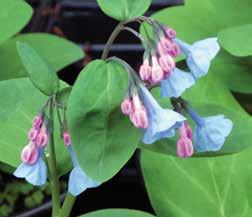


“A lot of my customers come from a ways off,” she said.” My first customer last year came from Potsdam, and I’ve had people from western Massachusetts just to purchase unique ferns, so it’s growing, and it’s starting to grow locally. I think people like to go to someplace that’s not a big box store. They love it, and they enjoy it. Part of the success of The Fernery is the fact that it is small and it is a bit of a niche product. It’s kind of fun, and it’s like a little trip.”

Part of Tedesco’s mission is propagating knowledge. The company website notes that she strives to “educate about native plants and change the landscape culture to a healthier alternative.” Two years ago, that led to Tedesco, together with Hartwick College professor of biology Dr. Peter Fauth, beginning a native plant program on campus.
“I have been a volunteer curator at the Harwick herbarium for 15 years, and I’ve been talking with Dr. Fauth all about the native plants and he knew I’d started The Fernery,” she said. “I guess, seeing these empty greenhouses, we decided, ‘maybe we’ll start something.’ We talked about it for years and finally did it. Dr. Fauth had whole herbarium upgraded – benches and a heating system –so, he’d done these upgrades and we wanted to use it.”
“It’s definitely student driven,” Fauth said. “There’s a focus for getting students some training and knowledge for native plants, so we’re calling it the Native Plant Propagation Initiative, and they’re learning to propagate, but it’s education on why you might want to use native plants rather than non-native. I’ve been blown away by the number of students interested. All I’ve really done is send out an email to biology students and I get more students saying they’re interested than we can support. We had three interns this year and two last year, but probably had 20 or so students say they were interested. So, it’s been good, and the two interns from last year are both doing senior projects involving native plants, so that interest carried over.”
Fauth noted that the college has also partnered with the New York State Office of Parks and Recreation and Historic Preservation to “propagate native plants to put into their state parks.”
“They simply don’t have enough room to propagate what they plan to plant,” he said, “so they’re looking to institutions for partnerships, and we are one of those right now. We just started this summer.”
BACKGROUND IMAGE BY FREEPIK COM
PHOTOS CONTRIBUTED
Narrow beech ferns are seen potted at The fernery. | ALLISON COLLINS
something’s sprouting
The Hartwick program’s success, Tedesco said, is indicative of a larger movement toward prioritizing native plants.

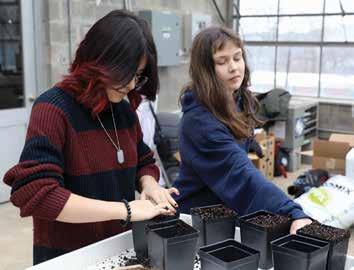
“Native plants have become much more popular, especially since Dr. Douglas Tallamy (published ‘Bringing Nature Home’) and ‘Nature’s Best Hope’ and some others about the benefits of native plants and the ecological benefits,” she said. “He’s basically an entomologist, but (writes on) how native plants benefit wildlife via promoting insects – bees, butterflies – that have co-evolved with them. And there are studies that show how our native birds are dependent on native plants, and we’re losing (native bird populations).
“Dr. Tallamy also promotes something called the (‘Homegrown National Park’),” Tedesco continued. “There’s four million acres of lawn in the US, and he’s promoting people convert portions of their land or lawn into native plantings so that, in a way, you’re going to have the equivalence of national parks just by converting lawns. And the Wild Ones is a native plant group … and there’s chapters in the Mohawk Valley, Utica area and Albany area, and chapters growing all over the country. I’ve had more business from Wild Ones groups than I have locally. There isn’t one yet in the Southern Tier or Oneonta, though I anticipate there will be, eventually.”
Why Go Native?
The reasons for planting native species, Tedesco and Fauth said, are many.


“They’re already growing here, so they’re going to grow great, and probably not going to attract some of the pests,” Tedesco said. “It should be easier, and they also fulfill ecological functions; native plants that grow on wetlands or streambeds are holding the bank in and reducing sedimentation, so there’s all kinds of benefits to native plants.
“You can buy large native plants, and you’re going to see a better result because they’re already native,” she continued. “Many (non-native plants) are grown down south, with pesticides and fertilizers, and then shipped up north – that uses fossil fuel – then marketed with fancy pots and labels and shipped to garden centers with tags that are misleading. There’s a lower survivability rate on those than native plants … and (native) plants are more aesthetically beautiful. Seeing a little sedge in flower because I just happened to be there at the right time is a miracle, to me.”
“They evolved here under these climatic conditions, so they should be able to handle them well and the type of drought we get or the more-rainy-than-usual times, because they’ve been doing this for thousands of years,” Fauth echoed. “For most people, the big attraction, wildlife-wise, is butterflies. When you have so many butterflies, it’s a whole other level of beauty.”
Tedesco said seeking out native species does require care.
“Because there’s no regulation on what is native, we’re getting a lot of greenwashing,” she said. “Everything is native somewhere … but we want to concentrate on plants that actually grow here, and I concentrate 99% of mine on (coming from) the Leatherstocking region. It’s trying to get as close as you can; plants that grow where you live is actually the goal.
“When you go shopping, that’s what you should be aiming for, and a lot of times, people in the garden center don’t know where their plants or seeds came from,” Tedesco continued, “and to figure out where to get those native plants or how native it is, is really important.”
top to bottom: Hartwick College interns Luna Lopez and Brynita Haas fill pots with soil in March. Hartwick College intern, Yoleydi Figuereo, 21, places rice husks around a mint cultivar to keep pests away from the young plants. | ALLISON COLLINS
Cephalanthus occidentalis, or buttonbush, Tedesco said, is an excellent shrub for stabilizing banks around lakes and ponds. It attracts various butterflies and birds.
Tedesco noted that popularity is rising especially in “more urban, suburban areas.”



“If you go to more well-to-do areas, they’re turning lawns into native plantings,” she said. “Western Massachusetts is a hotbed. It’s funny how it’s spreading slowly … but we’re catching on. I started The Fernery 10 years ago with just ferns and shade plants and I’m a small, backyard business, so I never really anticipated much business, but now, I could definitely expand if I wanted to.
“Native plant businesses are opening up all over the place, really, since COVID,” Tedesco continued. “People were home gardening and watching videos about native plants, so that really accelerated the movement, and climate change issues and (discussion around) the bees, pollinators and monarchs. All of these are factors, but I’d say in the last five years, it’s exploded.”
reaping rewards
Tedesco said she hopes to keep sowing her sentiment.
“I do not plan to grow much bigger, but I do plan to partner with more organizations and provide them with native plants or help them find native plants,” she said. “I’ve partnered with Utica Zoo, Huyck Preserve, Hartwick College, Otsego Land Trust and provided plants for all these organizations. There’s the Hartwick College Plant Sale (in late April) and the (Delaware-Otsego) Audubon Plant Sale (in May), and The Fernery is providing plants for them. There’s a wildflower walk at Gilbert Lake State Park, and I do have some other initiatives and commercial establishments that are requesting more true native plants … so I’m connecting with larger centers to provide straight native species, because customers are requesting them and they can’t find them in the big places.
“I’m passionate about plants and I’m passionate about the environment,” Tedesco continued. “I’m concerned. I’m concerned about invasive species and pesticides in lawns and all the environmental issues; we don’t have to do that. We can have beautiful gardens with our own native plants.”
The Fernery is open May through September, by chance and appointment. For more information and a list of this year’s available species, visit theferneryatwhitehouse.com or find “The Fernery” on Facebook. +
to learn more about native plants, tedesco recommends:

“Bringing Home Nature,” by Dr. Douglas Tallamy, University of Delaware Wild Ones – wildones.org; Mohawk Valley and Albany chapters

New York Flora Association – nyflora.org/botany
Leatherstocking Botanical Society Facebook page





for help determining if a plant is native, tedesco suggests the following resources:
New York Flora Atlas – newyork.plantatlas.usf.edu/ National Wildlife Federation – nwf.org/ NativePlantFinder/Plants
The Biota of North America Program, BONAP –bonap.org
Audubon Native Plant Database – audubon.org/nativeplants

Leek & Kale Galette

Leeks are, I think, a more elegant onion option. They’re a bit milder and less common than the usual white or yellow onion, though just as versatile. This leek galette, or free-form tart, makes for a light, deceptively simple spring dish that does double duty as a side or a more delicate entree.
According to spruceeats.com, leeks, a member of the Allium family, are “a bulbous vegetable with white flesh and leafy green tops” that can be “boiled, braised, fried or roasted.” The vegetable is native to the eastern Mediterranean, the site notes, and “the biggest producers are Indonesia, Turkey, France, the Republic of Korea and Belgium.”
But leeks also like it upstate.
“Leeks are relatively easy to grow in our climate, but they take patience and advanced planning,” Carla Crim, a horticulturist with Cornell Cooperative Extension of Delaware County, said in a written statement. “Occasionally, you can find leek seedlings in garden centers, but most gardeners grow them from seeds. As with other members of the onion family, it is important to use fresh seed every year.”
Crim advises starting leeks in late February or early March in 4- to 6-inch pots.
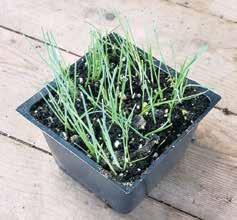
“I sprinkle (the seeds) on the surface and spread them around, so they are spaced about ¼ inch apart,” she said. “I top them off with about ¼ inch of moist soil and, after about a week at room temperature, little green hooks pop up and I move them

Cookin’ Collins WITH
By allison Collins
under grow lights. Once the seedling tops fully emerge, I give them a haircut, leaving only about (two to three inches) of green. The trimming make for a nice chive-like garnish. I give them a trim every couple of weeks until (it is) time to plant out. I feed them with a dilute fish emulsion or a vermicompost – worm casting – tea weekly.”
Leek seedlings, Crim said, can get planted outdoors in late spring, and “should (be) almost the thickness of a pencil.”
“They can take a bit of frost, but not a hard freeze,” she said. “If needed, they can be protected by row cover (and) should be spaced four to six inches (apart), either in a staggered orientation or in rows that are 12 inches apart. Blanching is required to get the long white leeks like you see in stores. A few weeks after transplanting, mound soil or mulch around the base. Alternatively, you can use newspaper, cardboard or plastic to cover the lower part of the leeks, making sure that no sunlight can get through.”
Gardeners, Crim said, can harvest leeks from summer through autumn, depending on the desired size.
“Leeks are very slow growing,” she said. “It takes 90-120 days from the time of transplanting to harvest for them to reach ‘market’ size. That’s not to say you can’t enjoy some small, tender baby leeks throughout the summer. Leeks stand up to frost at the end of the season, and are usually fully mature by the end of October.
“If you used soil to blanch, you will need to take extra care to clean the leeks,” Crim
continued. “An easy way to do this is to cut the leeks in half lengthwise and rinse with cold tap water. If they are particularly dirty, you might need to soak them in a sink or bowl several times.”
Leeks’ appeal, Crim said, is sprouting. “Leeks do seem to be gaining popularity in cooking and in gardening,” she said. “Leeks are traditionally associated with European and Asian cuisines, but their use in everyday dishes seems to be on the rise. Leeks are low in calories and high in fiber, vitamin C and vitamin K. They also have a mild diuretic effect, so they are used in cleanses and detox diets. The increasing interest in plant-based and vegan diets has also contributed to the popularity of leeks, as they are a great substitute for onions and garlic in many dishes.”
20 | UPSTATE LIFE MAGAZINE | SPRING 2023
CONTRIBUTED
Young leeks require a trim every couple weeks. The trimmings from young leeks, Crim said, can be used as a chive-like garnish.
Galette is best served warm or at room temperature.
LEEK GALETTE
Recipe modified from feastingathome.com
Ingredients:
premade pie crust or puff pastry, plus flour for dusting

1 small bunch kale, stems removed and leaves chopped
3 cloves garlic, chopped
3 medium leeks, cleaned and chopped
2 to 3 tablespoons olive oil
1 tbsp. butter
kosher salt
pepper
1 tbsp. fresh sage, chopped
1 tbsp. fresh parsley, chopped
2 eggs, beaten
1 tbsp. Dijon mustard
1 tsp. anchovy paste or miso paste
Juice of half a lemon
1 c. shredded Swiss cheese
1 c. marscapone
1 egg, plus 1 tbsp. water
Directions:
Preheat oven to 425 degrees Fahrenheit.
In a heavy-bottomed pan, saute garlic and leeks in the olive oil over medium heat for about five minutes. Add butter and kale and cook for an additional three minutes. Season with salt and pepper and add parsley and sage. Remove from heat and set aside.






While veggies are frying, in a bowl, whisk together eggs, anchovy paste, mustard and lemon juice. Season with salt and pepper. Set aside.

Roll pie dough on a floured surface, forming a rough circle, about 1/8 inch thick. Aim for a circle about 14 inches across.
Move pastry to a cookie sheet, pizza stone or large cast-iron skillet. If using a cookie sheet, line pan with parchment paper.
Spread marscapone on the pastry, leaving two inches around the edge.
Gently spread leek mixture over marscapone.
Fold over the outer two inches of pie dough, overlapping and pinching gently to secure.
Pour egg mixture carefully over the leek filling and top with the Swiss cheese.


Beat remaining egg with 1 tbsp. water. Brush egg wash over just the outer edge of pastry.
Bake galette for 10 minutes at 425, then decrease temperature to 375 degrees Fahrenheit and bake 25 to 30 more minutes, until crust is golden brown. Cool for 10 minutes, then serve warm.
tips:
n If using a pizza stone or cast-iron skillet, it’s helpful to let the pan heat up before placing crust in. This ensures a nice crust.
n Gruyere, Emmental or a similar nutty cheese would work as an alternative to Swiss.
n If pastry is proving very sticky, you can press it into the pan or cookie sheet.
1
This recipe is full of fresh, green produce.
2 Leeks get sauteed with garlic and oil to start the galette.
3
In the last few minutes of cooking, add kale and saute until barely wilted.
4 Chopped herbs get added to the filling at the end, keeping their flavors fresh.
5 Eggs, mustard, lemon juice and savory anchovy paste complement the vegetable filling.
6
The whisked egg mixture is poured over the galette just before cooking.
7
Roll dough on a well-floured surface.
9
8 Spread marscapone over prepared dough, leaving room at the outer edge.
10
Pour leek filling onto pie dough.
fold over pie edges before baking.
Cleaning leeks

Leeks tend to hold dirt in their layers, so thorough cleaning is important.
To clean leeks, first trim the top third or so of the vegetable – most of the dark green tops. The tops can be frozen and used in homemade stock.

Also trim the white bulb root end and discard or compost.
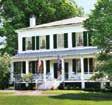



Keep the light green-white cylinder-shaped midsection of the plant and slice into sections. Then cut the tubular sections into halves, vertically.

You can either wash the leeks at this stage, in a basin of water, gently agitating the leaves to allow the soil to sift down to the bottom, or slice the halved vertical leeks, forming halfmoon slices. This works great for this recipe.


Just as with the halved vertical sections, dump the sliced leeks in a basin of water and stir, then let sit.

Scoop out the slices with your hand, allowing the water to drain as you go, and place slices on a clean, dry towel.
Leave the sliced leeks to air dry until ready to use. +

 PHOTOS BY ALLISON COLLINS
top left to right: The dark green tops can be saved for stock, and the white root ends trimmed and discarded or composted. The midsection of the leeks should be cut in sections, then halved lengthwise. Because of their many-layered interiors, leeks require careful cleaning. After halving vertical sections, you’re left with half-moon slices. Allow the sliced leeks to soak. Cleaned leeks should be spread on a clean, dry towel and allowed to air dry.
PHOTOS BY ALLISON COLLINS
top left to right: The dark green tops can be saved for stock, and the white root ends trimmed and discarded or composted. The midsection of the leeks should be cut in sections, then halved lengthwise. Because of their many-layered interiors, leeks require careful cleaning. After halving vertical sections, you’re left with half-moon slices. Allow the sliced leeks to soak. Cleaned leeks should be spread on a clean, dry towel and allowed to air dry.
Phone: 607-847-6173 • Like us on Facebook Blenheim-Gilboa Power Project 1378 StateRoute 30,North Blenheim NY Scan forInfo FR EE ADM ISSI ON &P ARKING • OPE NY EA R - RO UND • Fun, Interactive Exhibits at Our Visitors Center • Early American Life at Historic Lansing Manor, (Seasonal) • Free Events &Activitiesfor the Whole Family • Ask About Our Free Group Tours, School Field Trips &Community Event Space Powerful Fun! Learnthe HistoryofPower Feel thePowerofHistory 2023 EVENTS May 20 Teddy Bear Picnic Jun 10 Touch-a-Truck Jul 16 Antique Auto Show Aug Summer of STEM Sep 9 B-G’s50th Anniversary Sep 23 Wildlife Festival Oct Energy Awareness Month Oct 21 Festival of Frights Nov Sunday Afternoon Movies Dec Festival of Trees Dec 9 Holly Jolly Party Blenheim- Gilboa Visitors Center and Lansing Manor
A WorldW.I.D.E. Family Festival
BY CHELSEA FRISBEE JOHNSON

Mark your calendars for the third annual WorldW.I.D.E. Family Festival, hosted by Womxn for Inclusion, Diversity and Equity, W.I.D.E., at the Delhi Village Square, from 11 a.m. to 2 p.m., Saturday, June 3.



This free event offers family-friendly activities, including kids’ crafts, live music, a scavenger hunt, raffles, local food for purchase and a bake sale to support W.I.D.E.’s work in the community. W.I.D.E. is a social justice organization that believes in promoting the inclusion and equality of all people through education and community outreach.


“The goal of the event is to introduce the children of our area to different cultures and people … to spread kindness and respect for all people, and to inspire kids to travel and experience new things,” Lauren O’Leary, co-founder of W.I.D.E., said. “This year, we hope to have live music, featuring an African drummer. Last year, we welcomed 350 people to the event, and we hope to reach 500 attendees this time around.”
something for everyone
There will be activities highlighting different cultures, religions and diversity that exist in this area. When they get a stamp on their “passport,” they will be entered to win a gift basket. Activities will include sushi rolling with Tuna III, a local Japanese restaurant in Delhi, learning about Middle Eastern spices and cuisine, a booth on Ukrainian culture and food and flag making with Delaware County Pride. W.I.D.E. will also be selling baked goods to support its work providing more multicultural books and experiences to the youth of Delaware County and raising awareness about multicultural issues.
“This year’s event happens right after the annual Covered Bridge Run,” O’Leary said. “Everyone who comes from that and brings their race entry number will get a free entry to the raffle, plus a free baked good. We want to provide a festival for kids that is interactive and free. The only thing you have to pay for is food.”
spreading the message
W.I.D.E. began in 2020, when area women got together to brainstorm ways to spread a message of acceptance and inclusivity in their community. W.I.D.E.’s annual programming includes multicultural literacy and performing arts grants for teachers and librarians in Delaware County. These grants allow teachers to buy books for their classroom or bring in performers that expose children to a variety of stories about, and written by, historically marginalized populations, including African American, LatinX, American Indian, Asian Pacific American, LGBTQ communities and people with disabilities. W.I.D.E. also offers free monthly programming at the Cannon Free Library in Delhi to celebrate multicultural events around the world.
W.I.D.E. is always looking for volunteer bakers for the bake sale or help with event setup, cleanup and logistics. Learn more, sign up to volunteer or suggest a musician or activity booth for June 3 by emailing WIDEnewyork@gmail.com or visiting wideny.org. +
SPRING 2023 | UPSTATE LIFE MAGAZINE | 23
from top, left to right: Performers at last year’s festival ‘Music of Indonesia and the Philippines,’ included Julie Licata, Tinny Wilkens, Ana Laura González and fideliz Sta Brigida. W.I.D.E.’s youngest volunteers help with the bake sale. The festival takes place from 11 a.m. to 2 p.m., June 3, in Delhi’s Village Square. Sushirolling demonstrations are offered by Wilson from Tuna III in Delhi. Students from SUNY Delhi’s MOSAIC Multicultural Center lead a Mexican tin art activity.
PHOTOS CONTRIBUTED
Spring!
For this edition, I interviewed one of our region’s incredible wellness practitioners, Kate Cauley, a skilled acupuncturist and herbalist, about how wellness and self-care can become more integrated into this season of spring.

tell me about your work as an acupuncturist and how acupuncture contributes to your clients’ overall wellness.

I am a nationally certified acupuncturist and herbalist. I specialize in the treatment of musculoskeletal pain and muscle imbalance. I use a style of acupuncture called motor point or sports acupuncture. Most of the people I see suffer from joint pain, neuropathy or restricted range of motion. Professional athletes use this type of acupuncture to improve performance and reduce injury. Though results vary, based on stages of pain syndromes, once muscles are reset, the pain is gone. As an added bonus, strength and range of motion improves. Eliminating pain has made significant improvements to my patients’ lives.
Self-Care with Chelsea CORNER
BY CHELSEA FRISBEE JOHNSON
are lean. Fasting is a time our bodies reset after a long winter and is something I only do during this season. We are often told that bitter greens are the seasonal foods of spring. This is true, because they are a tonic for a sleepy digestive system. After eating cooked foods all winter, and fasting, our gut biome is ready to wake. Small amounts of lightly sautéed greens liven our system as our body prepares to eat raw foods again. If fasting isn’t an option, eating vegetarian or vegan for the season has its benefits, too. This is the season of growth and, just as the tiny shoots begin, it’s no coincidence animals give birth in the spring. Once, we had no other option than a seasonal approach to eating; today, it takes discipline, but it has a profound effect on our body and the planet.
exerCise
What are the top three wellness practices that you recommend to clients at this time of year?

What a great question! ‘Seasonal Approach’ has been part of my practice since I began studying this medicine. Not only for what I eat, but my activity and rest, too.
eat
Spring is a time of fasting for many cultures and religions. It is also true for the natural world as well. This is the time when shoots haven’t quite popped from the ground and fat reserves
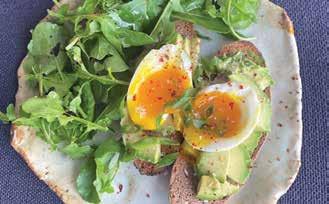
Spring is the time of movement after a long rest. So, that movement should start slow and grow. Yoga, walks or, perhaps, it’s the perfect time to start running! Remember, begin any practice as you would nurture a tiny pea shoot emerging from the ground: be gentle, or you’ll be seeing me for tendonitis.
sleep
All winter I slept like a bear, going to bed early and sleeping until the very last second. In the spring, I look forward to waking with the birds and seeing the sunrise, yet still enjoy an early bedtime. This follows the circadian rhythm our bodies hunger for. It is a simple yin-yang practice that will change in the summer, when I’ll wake early and go to bed late, just like the sun.
Kate Cauley, nationally certified acupuncture and herbalist.
Cauley advises seasonal eating.
24 | UPSTATE LIFE MAGAZINE | SPRING 2023
What’s your favorite self-care practice during spring?
My favorite spring practice is getting back to the garden. As soon as the snow melts, I’ll seek dandelion greens, asparagus and overwintered leeks. The garden has rested all winter and so have I, so it’s time to take the practices I’ve mentioned into the natural world. I start by starting seeds, small blocks of soil, light watering, gentle movements. Thinning rows of greens and nibbling on the bitter shoots. Tending the garden is no different than self-care. And when I see these relationships outside of me, I know they are working within. What inspires you about your work? What are the challenges?
Part of the reason I love treating musculoskeletal pain so much is I can objectively see results. When the muscles reset, strength and movement returns. It inspires me to see a patient’s response (to) discovering their own power and knowing their body WANTS to be in a state of equilibrium.
One of the greatest challenges I face daily is my patient’s mindset. If a person thinks nothing can be done for their pain, because the doctor said ‘this’, or the PT said ‘that,’ it becomes very, very difficult to treat. Treating someone’s mind is far more difficult than treating their pain.
how can people learn more about you and your work?

I’ve turned my website into a patient education and patient portal. There, you can discover how this medicine works on the phases of pain. The portal allows you to book appointments online. You can find me at katecauleyacu.com



To learn more about Seasonal Approach, a concept which is not new, but a phrase I coined for living attuned to the seasons, become a patient!


Upstate Life Reader Book Review


“The Last Thing He Told Me” by laura Dave
This is the first book I read by this author and enjoyed it very much. It has many plot twists and turns and keeps your interest. It also has parts that tug on your heartstrings. If you are a fan of mysteries, I think you would like this novel. — Kathleen Hahl

The Sheep’s Nest Embellishments for You and Your Home 45 Main Street Hobart, NY www.thesheepsnest.com 607-434-6918 Thurs.-Sat. 10-5 look for the tourism issue of upstate life, publishing in June 2023 FAMILYOWNED &OPERATED •Water Remediation •MoldRemediation •Fire Damage &Smoke Damage Cleaning •Residential/Commercial Carpet &Upholstery Cleaning Working HardtoGiveYou PEACE OF MIND 607-988-2516 servicemasterbyburch.com
Kate Cauley Acupuncture Clinic 50 Dietz Street, Suite O Oneonta, NY, 13820 607-386-4636 katecauleyacu.com +
The Kate Cauley Acupuncture Clinic offers acupuncture treatments as well as herbal products for purchase.
PHOTOS CONTRIBUTED
Chelsea frisbee Johnson is a life coach, writer and spiritual leader who loves helping people find more joy and peace in their life.
top to bottom: The Sidney Camp Meeting Grounds was a popular vacation spot for Methodists and local residents for over 70 years.
The Walls Talk
 BY MARK SIMONSON
BY MARK SIMONSON
Sidney Neighborhood Was Once a Hotspot
Sidney, a vacation destination?
Many may not think of the Delaware County village today as a prime destination, but during the summer months of the 1870s through 1947, about 20 acres of woodland in Sidney came alive with people from around the region. Folks flocked to spend their vacation, an overnight stay or just the day at the Camp Meeting Grounds.

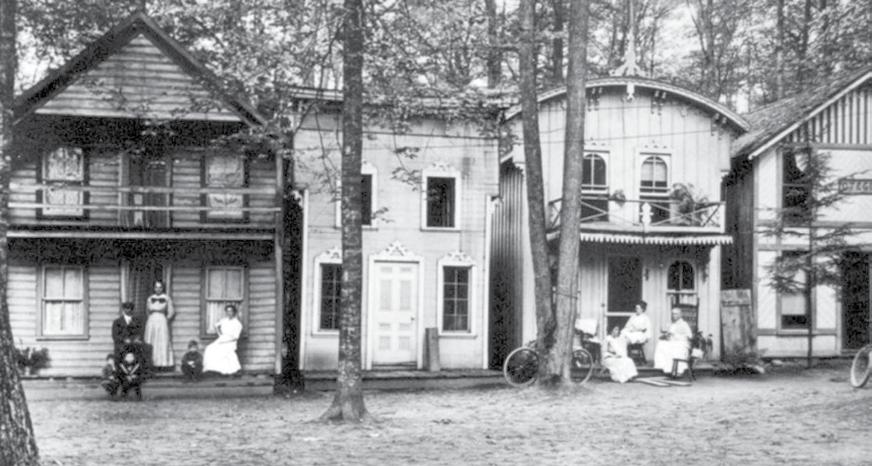
Now a quiet neighborhood on the southern edge of the village, the camp grounds once provided an experience for thousands of Methodists and their friends throughout what was known as the Wyoming Conference, a geographic region in the jurisdiction of the Methodist Church. Camp Meetings were a means of religious expression for its participants, and grew in popularity in our area around 1850.
a historic hub
In 1873, the Chenango and Oneonta districts of the Wyoming Conference voted to establish a permanent Camp Meeting site near what was then Sidney Plains, after previous sites had been scattered across the area. The initial 10 acres of land, high on a hilltop, was finally purchased in 1874 by the Sidney Grove Camp Meeting Association. The grounds were located where today’s Haynes Boulevard and Melrose Street are.

The first Camp Meeting was held during late August 1874, where 50 side-by-side pitched tents and a few cottages provided housing for the campers. Vacationers ate at a boarding hall on the grounds. The success of that first meeting and others in the next few years prompted the association to purchase 10 more acres of land to enlarge the site.
For travelers in these years, Sidney became an ideal location for the campgrounds, as the D & H an O & W railroads passed through the area. At the peak of the camp’s popularity, 32 trains arrived each day. Other families arrived in wagons, bringing their tent and provisions. Gradually, permanent cottages were built by private owners to replace the tents. Some cottages were built by churches, with various groups using them.
Meetings were held in the center part of the camp. By 1886, the camp’s financial successes meant nicer facilities, including a 30-by-60-foot tabernacle, a lodge hall, stands for seating, a sexton’s house and a large barn. The Camp Meetings continued to grow in popularity. One of the star attractions of the grounds was “The Lower Spring.” A pathway among shade trees led one to a spring, which was about four feet square and six feet deep, protected by a covering of flag stone. It provided clear, sparkling water on many a hot summer’s day.
The
Melrose Street
are. | PHOTOS COURTESY Of THE SIDNEY HISTORICAL ASSOCIATION 26 | UPSTATE LIFE MAGAZINE | SPRING 2023
campgrounds were found on the south end of the village where today’s Haynes Boulevard and
area
One of the drawbacks of the grounds was the strong presence of mosquitoes. Still, in the early 1900s, attendance at special Sabbath services during a 10-day session reached 10,000. At these services, there was the sound of a great bell, followed by many voices lifted in songs of praise. It was said village residents could hear the festivities two miles below in the valley.
moving with the times
With the dawn of the automobile, and as older members of the association died, the popularity of Camp Meetings declined. World War I’s outbreak added to the decline, so the 10-day sessions were discontinued and the buildings began falling into disrepair. The grounds were still used for picnics, reunions and meetings of other denominations.
However, the Camp Meeting grounds were given new life in 1923 by the Epworth League Institute of the Wyoming Conference, which was for young people. The old barn was dismantled, providing material for a two-story dormitory. Another dormitory was added, as well as a tennis court, plus the boarding hall was enlarged and repaired. The pace of the new “institute” was much faster than the old Camp Meeting’s daily routine. Classes were held in the morning and, in the afternoon, tennis, baseball, croquet and other games were held. In the evening, young people took part in the sacred devotions. Those who attended these weeks in Sidney simply called their vacations “Institute.”
With increased attendance at Institute, the Wyoming Conference decided the Sidney grounds were no longer adequate to accommodate the youngsters wanting to attend. It was in 1947 that the conference decided to buy an estate in Windsor, called “Sky Lake.” It could be used year-round, and accommodate all ages. Developers purchased the land and demolished the buildings in Sidney, making way for much-needed housing after World War II for veterans of the G.I. Bill, among others.
recollecting Camp meeting
While gone from the landscape, the Camp Meeting grounds were not forgotten. In 1972, when the village celebrated its bicentennial, the camp was recreated at the Firemen’s Field on River Street.
What was then The Oneonta Star caught up with a local resident who had recollections of the old grounds.


As seen in the July 1, 1972 edition: “‘Mama took the four of us there and we’d spend the day having a picnic and listening to the services,’ reminisced Mrs. Jay Badeau, a lifelong resident of Sidney, recalling the Camp Ground. Everybody would get dressed up and go to Camp Meeting. It was like a big social event as well as a religious service.
‘mama tooK the four of us there anD We’D spenD the Day havinG a piCniC anD listeninG to the serviCes. everyBoDy WoulD Get DresseD up anD Go to Camp meetinG. it Was liKe a BiG soCial event as Well as a reliGious serviCe.’”
“Mrs. Badeau’s late husband often drove the ‘hack’ or bus that went about town picking up folks who wanted to go to Camp Meeting. Mrs. Badeau could recall when the Campground was lit by pine knots in iron cribs, something giving the area an eerie look and adding to the old time revival atmosphere. Then in 1901 electric lights replaced the flame lights.”
The 1972 recreation didn’t disappoint, as readers of the July 5 Tri-Town News learned that about 1,000 attended the afternoon events, and 3,000 in the evening.

The recreation began with the simultaneous ringing of all church bells in Sidney. “The official meeting began with the ringing of the old camp bell drawing the crowd to the service area or in the shade of nearby trees. This was exactly as done at Sidney Grove as many sat by the shade of their cottage fronts to attend church,” the article noted. An amassed choir of the area churches sang familiar hymns. There were several speakers and a service conducted by several Sidney ministers. The evening program was reminiscent of an old-time revival meeting, featuring a Billy Graham soloist, Myrtle Hall and Dr. Charles Anderson, radio evangelist and director of the “Word of Life” camp in Schroon Lake.
Although today a village neighborhood, Haynes Boulevard and Melrose Street are still lined with plenty of pine trees – a reminder of the shade shared by those attending Camp Meeting. +
Historian Mark Simonson grew up in Oneonta. He has worked in public relations, marketing and broadcast journalism. Simonson was appointed Oneonta City Historian in 1998. He writes a historical column in The Daily Star and has published books highlighting local and regional history. Here, Simonson shares stories about old buildings of interest in the upstate region.
 A view of the present day Haynes Boulevard, shaded by many a tree just as it was in the days of the Camp Meeting Grounds. | MARK SIMONSON
A view of Melrose Street at the corner of Camp Meeting Street in March 2023. | MARK SIMONSON
A view of the present day Haynes Boulevard, shaded by many a tree just as it was in the days of the Camp Meeting Grounds. | MARK SIMONSON
A view of Melrose Street at the corner of Camp Meeting Street in March 2023. | MARK SIMONSON
The Catskill Geologists
Pratt Rock
BY ROBERT AND JOHANNA TITUS

Have you ever climbed the trail at Pratt Rock, along Route 23, just east of Prattsville? We are betting that a lot of you have driven past it and never stopped to look around. Well, this is a good time. They have been renovating the park and the trail is better than ever.
First, let’s discuss the history of the rock. It was the product of Colonel Zadock Pratt, founder of the tannery that proved the making of Prattsville, back in the mid-19th century. He was sort of the Rameses II of the Catskills, making several sizable Pratt Rock ledges into monuments of his life. See photo above.
set in stone
Contact the authors at randjtitus@prodigy.net, find “The Catskill Geologist” on Facebook or visit thecatskillgeologist.com.
Pratt had itinerant stone carvers produce something of a Zadock Pratt biography. His image is up there, along with that of his son George, who died in the Civil War. His horse is up there, too. An application of whitewash makes it all the better. The plan was that Pratt would be buried up there, but that didn’t work. A chamber was
carved, but legend says it leaked rainwater, making it unsuitable for a permanent burial.
As for the geology of the monuments, these are sedimentary rocks, deposited as large masses of mostly sand as part of something called the Catskill Delta, about 385 million years ago.

looking Back
Imagine, for a moment, you have traveled down to Louisiana and are standing on the Mississippi River Delta. If you could travel down into the ground beneath you, then you would find the sediments of ponds, swamps and bayous, all typical of that region and large deltas. But mostly, you would find the sands of old river channels, a lot of them. Rivers have been flowing through this part of Louisiana forever.
Now, return to Pratt Rock and look up at the ledges of this steep slope. It’s all a petrified version of what we just saw in Louisiana. These ledges represent a cross-section of a small part of the great Catskill Delta.

28 | UPSTATE LIFE MAGAZINE | SPRING 2023
Colonel Zadock pratt commissioned several stony monuments in his name.
We would like you to take the trail up the slope until you find the old burial chamber. See the photo at right. Look closely. The strata just above the chamber show the left side of one of those river channels. The lower boundary rises up to the very shore of that river. If you climb up and look to the right, we think you will be able to convince yourself that you can see the right side of the same channel. This is a petrified river; have you ever heard of such a thing? It’s a remarkable example of looking into the distant past and seeing a vivid image from that time. We like to climb up and hold our hands up to these rocks, imagining the river currents that were once here. It’s one of the great privileges of being a geologist to make journeys into the past like this. +




SPRING 2023 | UPSTATE LIFE MAGAZINE | 29
CONSTRUCTION SERVICES, INC. Septic Systems Sitewor k Ponds Excavation Driveways Tr ucking Foundations Concr ete Sla bs COMMERCIAL &RESIDENTIAL 607-865-4916 Tweedie-Construction.com
Of ALLTRAILS.COM
The would-be burial chamber is pictured, along with the strata, showing remnants of a river channel.
PHOTOS COURTESY
READY FOR YOUR ARRIVAL

Relax in Montgomery’s only rooftop pool and spa. Escape to the elegance of Mobile’s historic Battle House Hotel. Come experience Alabama’s top hotels, resorts, and courses along the Robert Trent Jones Golf Trail. Stay in eight luxury hotels and play 26 world-class courses from the Tennessee River to Mobile Bay. Laugh, play, explore, and relax in picturesque settings. Pamper yourself in luxury spas. Tee off with family and friends. Walk to area attractions. Enjoy farm-to-table cuisine. It’s time to plan your next trip to the Robert Trent Jones Golf Trail.


To learn more, visit rtjgolf.com or call 800.949.4444. We will be here awaiting your arrival.

ANNISTON/GADSDEN » AUBURN/OPELIKA » BIRMINGHAM/HOOVER » DOTHAN » FLORENCE/MUSCLE SHOALS GREENVILLE » HUNTSVILLE » MONTGOMERY/PRATTVILLE » MOBILE » POINT CLEAR
Advertising & Media (Publishers, Public Relations, Marketing)
Business Directory Meet the Locals
The Cooperstown Crier 102 Chestnut St., Oneonta, NY 607-432-1000 coopercrier.com
Construction & Building Services
(General Contractors, Construction, Engineers, Architects)
Home Foam Insulation
Denver, NY • 845-594-7413 www.homefoaminsulation.net
Drilling Corp.
The Daily Star 102 Chestnut St., Oneonta, NY 607-432-1000 thedailystar.com
Titan Drilling Corp. 264 Co. Hwy. 38, Arkville, NY 1-800-GO-TITAN • 1-845-586-4000 titanwelldrillingny.com
Health & Fitness
(Medical Centers & Clinics, Dentists, Rehabilitation Centers) Otsego Outdoors otsegooutdoors.org

Home & Garden (Home & Garden, RemodelingBath & Kitchen)
Personal Services & Care (Salons & Spas, Funeral Homes, Driver Training, more...)

Shopping & Retail (Appliances, Clothing Apparel, Accessories, more...)
Homestead Pet & Farm Supply 3 Railroad St., New Berlin, NY 607-847-6173

Like us on Facebook
TopPrice
Tweedie Construction Services, Inc. 90 Crystal Creek Rd., Walton, NY 607-865-4916 • 607-865-4913



Diana Friedell Spiritual Counseling, Psychic Readings 607-433-2089 dianafriedell.com
Restaurants (Full Service, Casual Dining, Fast Food)
Sybil’s Yarn Shop 65 South Main St., Milford, NY 607-286-4061 • sybilsyarnshop.com

Auto, Motorcycle & Campers
Email: buyoldwarstuff@gmail.com Contact Vincent at 607-287-4022
(Automobile Dealers, Auto Body & Painting, Auto Clubs, more...)

Oliver’s Campers Inc. 6460 State Hwy. 12, Norwich, NY 607-334-3400 •oliverscampers.com

Construction & Building Services

(General Contractors, Construction, Engineers, Architects)


Windows & Doors Kitchens & Baths
A&J’s Windows & Doors Kitchens & Baths 4189 State Hwy. 28, Milford, NY 607-286-7856 anjwindows.com

Gilbert Plumbing & Heating
P.O. Box 96, Gilbertsville, NY 607-783-2289 • www.gilbertph.com
(Arts, Entertainment, Recreation, Travel, Events, Museums) ASSOCIATION GALLERIES

22 Main St., Cooperstown, NY 607-547-9777 • cooperstownart.com

Epic Landscapes Inc. 607-547-5800 www.epic-landscapes.com

BROOKS’ House of BBQ 5560 State Hwy. 7, Oneonta, NY 607-432-1782 • brooksbbq.com

Clinton Plaza, Oneonta, NY wolfwilde.com
Blenheim-Gilboa Visitors Center 1378 State Rt. 30, North Blenheim, NY 1-800-724-0309 nypa.gov/BGVisitorsCenter
Finance & Insurance
(Banks, Financial Advisors, Insurance)
Bieritz Insurance

Ben Novellano
209 Main St., Cooperstown, NY 607-547-2952 • 607-263-5170 (Morris) bieritzinsurance.com
Pure Catskills 44 West Street, Walton, NY 607-865-7090 purecatskills.com
Secor Home Inspections & Testing
Otsego, Delaware, Chenango & Schoharie Counties 607-287-7908 Secorhomeinspections.com
ServiceMASTER by Burch 607-988-2516 servicemasterbyburch/com

Shopping & Retail (Appliances, Clothing Apparel, Accessories, more...)
Cooperstown Cheese Company 3941 NYS Hwy 28, Milford, NY 978-257-4635 or 607-222-9875



Open Saturdays Year-Round Expanded
-
Cooperstown Farmers’ Market 101 Main St., Cooperstown, NY in Pioneer Alley cooperstownfarmersmarket.org
SPRING 2023 | UPSTATE LIFE MAGAZINE | 31
bieritz insurance
hours
With SNAPMatch, your spending power at the Market is doubled (up to $15) 101
30+ local farmers,artisans, crafters, and specialty food producers
9am
2pmbegin May 7
Main Street in Pioneer Alley, Cooperstown Cooperstownfarmersmarket.org
Antiques & Collectibles (Buying, Selling, more) Buying Old Military Items Vincent 607-287-4022
Email: buyoldwarstuff@gmail.com paid for old militaryitems, US or foreign: Ibuy collections. Will come to you.
MilitaryItems
From Vietnam to Ancient Times Guns Uniforms Swords Knives Bayonets Muskets Medals Patches Canteens Medals Boots Coats Tools Letters Binoculars
Buying Old
-
The Sheep’s Nest 45 Main St., Hobart, NY 607-434-6918 • www.thesheepsnest.com













 BY LEIGH INFIELD
BY LEIGH INFIELD




























 BY MONICA CALZOLARI
BY MONICA CALZOLARI




























 BY ALLISON COLLINS
BY ALLISON COLLINS










































 PHOTOS BY ALLISON COLLINS
top left to right: The dark green tops can be saved for stock, and the white root ends trimmed and discarded or composted. The midsection of the leeks should be cut in sections, then halved lengthwise. Because of their many-layered interiors, leeks require careful cleaning. After halving vertical sections, you’re left with half-moon slices. Allow the sliced leeks to soak. Cleaned leeks should be spread on a clean, dry towel and allowed to air dry.
PHOTOS BY ALLISON COLLINS
top left to right: The dark green tops can be saved for stock, and the white root ends trimmed and discarded or composted. The midsection of the leeks should be cut in sections, then halved lengthwise. Because of their many-layered interiors, leeks require careful cleaning. After halving vertical sections, you’re left with half-moon slices. Allow the sliced leeks to soak. Cleaned leeks should be spread on a clean, dry towel and allowed to air dry.

















 BY MARK SIMONSON
BY MARK SIMONSON






 A view of the present day Haynes Boulevard, shaded by many a tree just as it was in the days of the Camp Meeting Grounds. | MARK SIMONSON
A view of Melrose Street at the corner of Camp Meeting Street in March 2023. | MARK SIMONSON
A view of the present day Haynes Boulevard, shaded by many a tree just as it was in the days of the Camp Meeting Grounds. | MARK SIMONSON
A view of Melrose Street at the corner of Camp Meeting Street in March 2023. | MARK SIMONSON





















